Go With the Flow
Drawing is more than just outlining shapes—it’s about capturing life, energy, and movement. The gesture loops drawing technique is a dynamic approach that uses continuous looping lines to express motion and rhythm in figures or objects. This method is especially powerful for artists who want to loosen up, improve their flow, and infuse their work with expressive energy.
In this post, we’ll explore how gesture loops work, why they’re effective, and how to incorporate them into your sketchbook practice. Whether you’re a beginner or a seasoned artist, this technique can unlock new levels of fluidity and confidence in your line work.
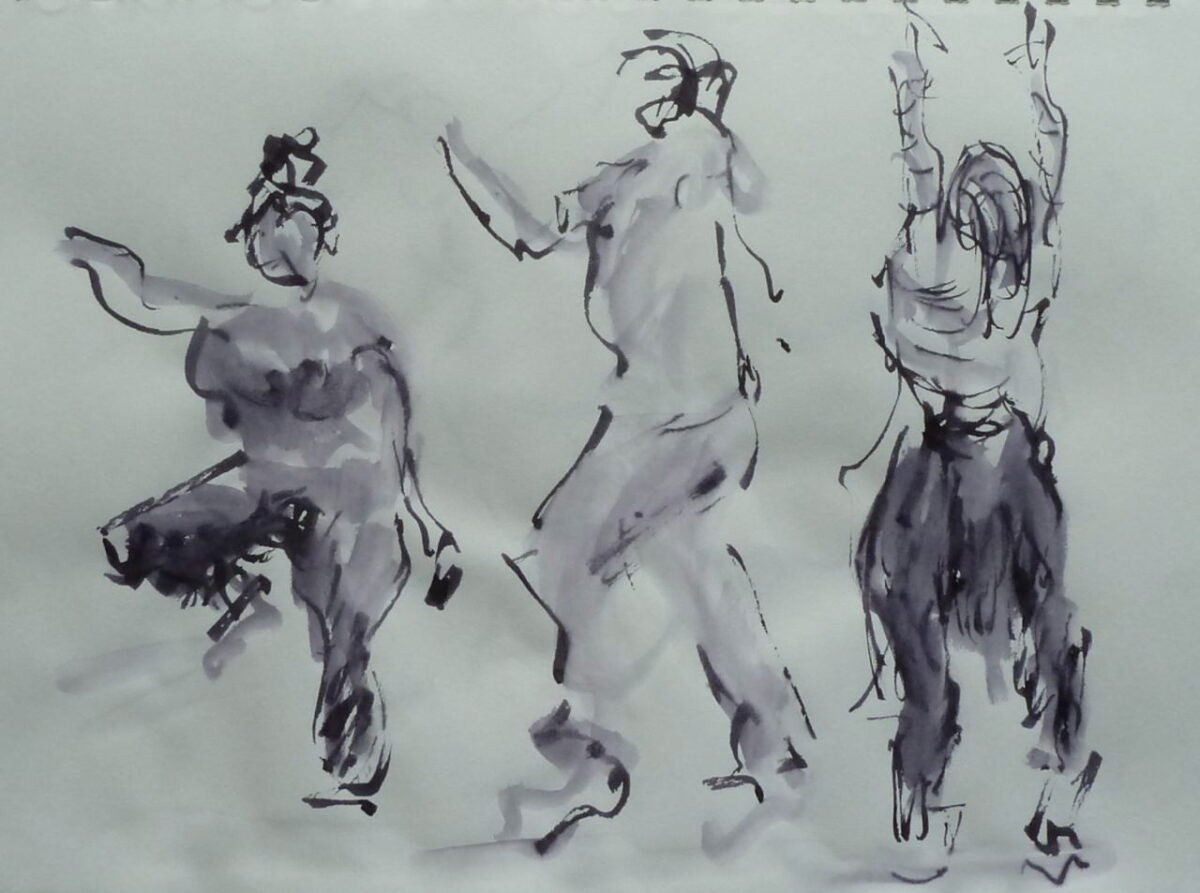
credit: SANTIAGORIOS
What Are Gesture Loops?
Gesture loops are continuous, flowing lines that loop through and around a subject to capture its movement, rhythm, and energy. Unlike traditional gesture drawing, which may use short, broken strokes, gesture loops emphasize uninterrupted motion—your pencil rarely leaves the page.
This technique is rooted in the principles of gesture drawing but adds a rhythmic, almost musical quality to the process. It’s not about accuracy or detail—it’s about feeling the motion and letting your hand respond intuitively.
Why Use Gesture Loops in Your Drawing Practice?
Builds Fluidity and Confidence
Looping lines encourage you to draw without hesitation. This builds muscle memory and helps you develop a confident, expressive line quality.
Captures Motion and Energy
Gesture loops are ideal for drawing moving subjects—dancers, athletes, animals, or even wind-blown trees. The loops mimic the flow of motion, making your drawings feel alive.
Enhances Line Economy
Because you’re working with continuous lines, you learn to say more with less. This improves your ability to simplify complex forms into elegant, expressive marks.
Encourages Intuitive Drawing
Gesture loops bypass the analytical brain and tap into instinct. This is especially helpful for warming up, breaking creative blocks, or exploring new ideas.
Sketchbooks.org | VISUAL RESEARCH HUB
Gesture Loops Sketch Examples
Visual research is critical for any creative endeavor. We have compiled specialized links to lead you directly to images, videos, and inspiration for "Gesture Loops Sketch Examples" across the web's best visual search platforms.
How to Practice the Gesture Loops Drawing Technique
Step 1: Choose a Dynamic Subject
Start with something that has movement or rhythm—like a figure in motion, a flowing fabric, or a twisting plant. You can use reference photos, live models, or even video stills.
Step 2: Use a Loose Grip and Large Movements
Hold your pencil or pen loosely and draw from your shoulder or elbow, not just your wrist. This allows for broader, more fluid lines.
Step 3: Begin with a Looping Line of Action
Start with a looping line that captures the overall flow of the subject. This could be an S-curve, a spiral, or a figure-eight shape. Let the line guide your composition.
Step 4: Layer Additional Loops
Add more loops to suggest limbs, contours, or overlapping forms. Don’t worry about precision—focus on rhythm and continuity.
Step 5: Vary Line Weight and Speed
Press harder or softer to create contrast. Move quickly for energy, or slow down for emphasis. These variations add depth and interest.
Step 6: Reflect and Refine
After a few passes, step back and observe. You can leave the drawing as a loose sketch or refine it by adding structure, shading, or color.
Tips for Mastering Gesture Loops
- Warm up with 1-minute loop sketches before longer sessions
- Use music to influence your rhythm and pacing
- Try different tools like brush pens, charcoal, or digital styluses
- Overlay multiple poses on one page to explore motion sequences
- Draw from life whenever possible to train your eye and hand coordination
- Limit your time to encourage spontaneity and prevent overthinking
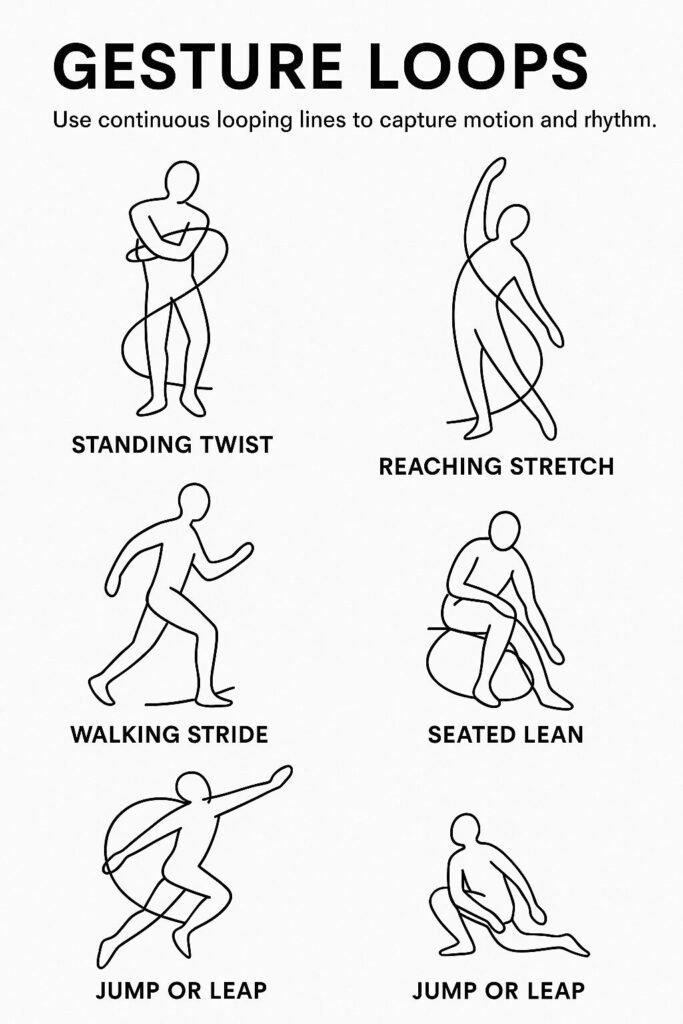
Creative Applications of Gesture Loops
Figure Drawing
Gesture loops are perfect for capturing the essence of a pose. Use them to explore weight shifts, balance, and body language.
Animal Studies
Animals in motion—birds in flight, cats stretching, horses galloping—are ideal subjects for looping lines that suggest speed and grace.
Abstract Art
Use gesture loops to create non-representational compositions that explore rhythm, repetition, and flow.
Fashion Illustration
Looping lines can suggest fabric movement, hair flow, or the attitude of a pose—great for stylized, expressive fashion sketches.
Animation Thumbnails
Gesture loops help animators plan key poses and transitions with energy and clarity.

Sketchbooks.org | SKETCHBOOK KINDS
How Sketchbooks Are Used by Doctors and Medical Students
When you think of tools essential to doctors and medical students, a sketchbook might not be the first thing that comes to mind. However, sketchbooks play a surprisingly vital role in the medical field, offering...
Frequently Asked Questions
What is the gesture loops drawing technique?
It’s a method of using continuous looping lines to capture motion, rhythm, and energy in a subject.
How is it different from regular gesture drawing?
Gesture loops emphasize uninterrupted, rhythmic lines, while traditional gesture drawing may use broken or varied strokes.
What tools work best for gesture loops?
Any tool that flows easily—like pencils, brush pens, or digital styluses—works well for this technique.
Can beginners use gesture loops?
Yes, it’s a great way to loosen up and build confidence, especially for those new to figure drawing.
How long should I spend on each sketch?
Start with 1–2 minute sketches to build rhythm, then extend to 5–10 minutes for refinement.
Should I use reference images or draw from imagination?
Both work—reference helps with accuracy, while imagination builds intuition and creativity.
Can I use gesture loops in finished artwork?
Absolutely—many artists incorporate looping lines into stylized or abstract pieces for expressive effect.
Final Thoughts
The gesture loops drawing technique is more than just a warm-up—it’s a gateway to expressive, intuitive, and dynamic art. By focusing on rhythm and flow, you train your hand to move with purpose and your eye to see beyond outlines. Whether you’re sketching dancers, animals, or abstract forms, gesture loops breathe life into your lines.
So grab your sketchbook, loosen your grip, and let the loops lead the way. Your drawings will thank you for it.
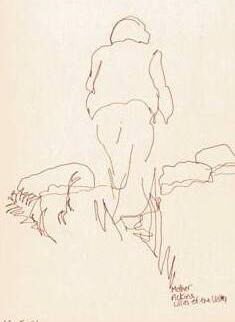
credit: ABZ
Ready to Share Your Work?


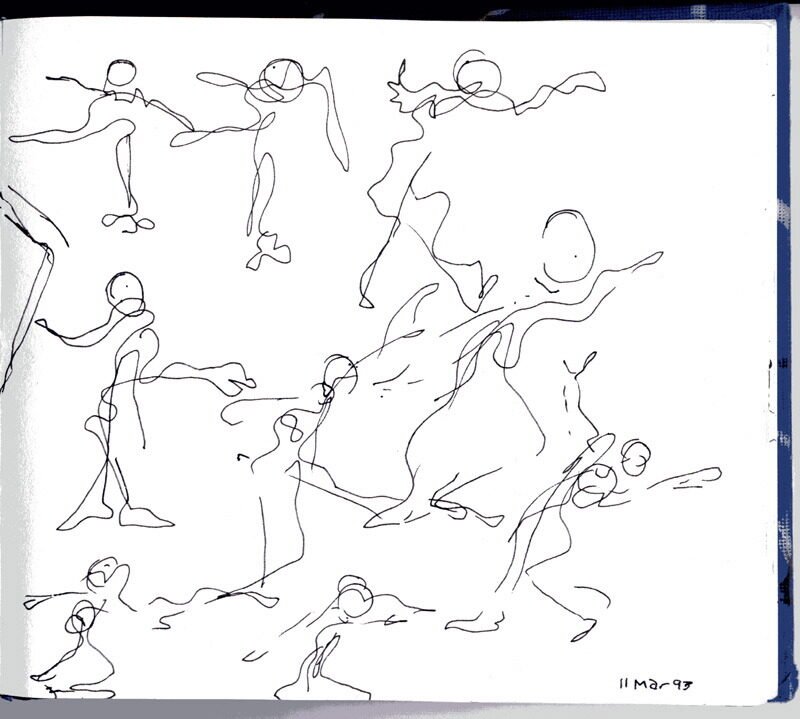
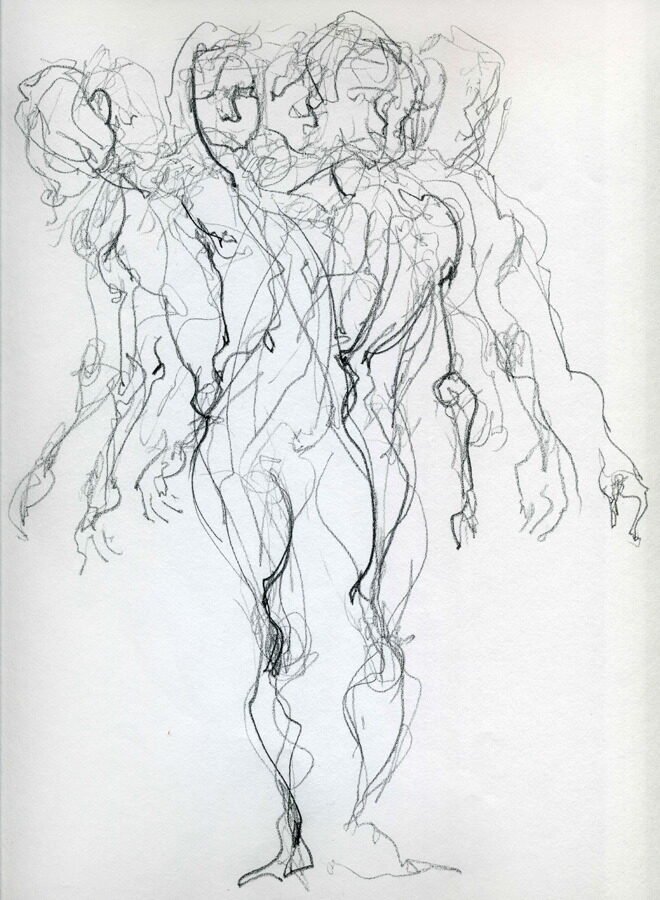
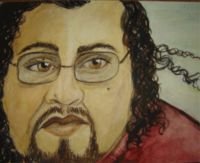
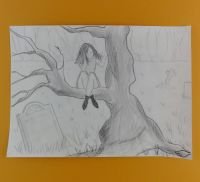
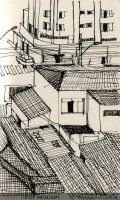
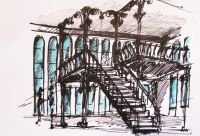
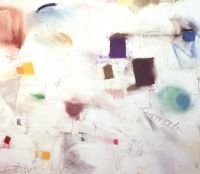
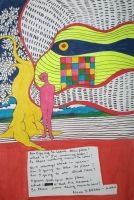

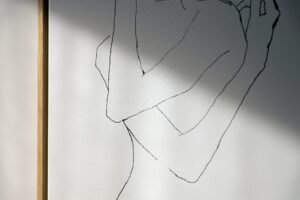
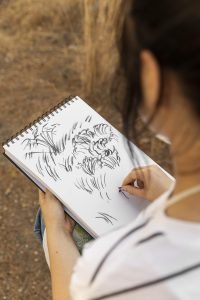
perfect for warming up before figure drawing
figures…